Secrets of Winter Wildlife Watching
Watching Wildlife In Winter
In winter, Yellowstone National Park morphs into a picturesque wonderland, complete with snowy woods, ice pellets of geyser rain, frozen waterfalls, and abundant animals. Although the bears hibernate; bison, elk, mule deer, moose, wolves, and coyotes roam the park. In summer the creatures spread out to graze grassy mountainsides, munch leaves in the woods, or hunt for prey in the hills. But in winter the animals mass in the lower elevations.
“Most of the wildlife cannot deal with the harshness of high-altitude winter conditions,” says Joshua Theurer, a resident instructor for Yellowstone Forever. “The animals have adapted by moving away from the harsh high country and into the valley bottom.” The snow also makes it easy to spot animal tracks as well as the animals themselves.
Here’s everything you need to know to see wildlife in Yellowstone during winter. And after you’ve finished exploring, come and get cozy with a coffee, hot chocolate, or signature beverage at the two lodges open in the winter, Mammoth Hot Springs Hotel or Old Faithful Snow Lodge. Snowcoach or over-snow transportation is required to reach Snow Lodge and the southern part of the park in winter, roads are closed to personal vehicles.
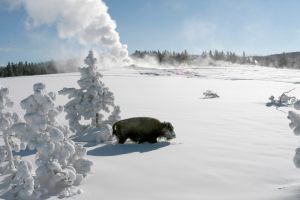
How To See Yellowstone Animals in Winter
In winter, only the road between the North Entrance at Gardiner, MT, to the park’s northeast entrance near Silver Gate/Cooke City, MT, remains open to visitors’ vehicles. Remember that “open” doesn’t mean “easy driving.” Conditions change quickly, snow drifts, and roads ice over. Even if you’ve tricked out your four-wheel-drive Jeep for blizzards, snow-packed roads can be challenging for even experienced drivers. It’s safer and more fun to take a snowcoach tour on park roads that are groomed for oversnow vehicles. They are limited to certain routes but allow you to look and learn while the staff drives. You can also take advantage of Yellowstone’s snow to explore the park as the early visitors did — by skis and snowshoes.
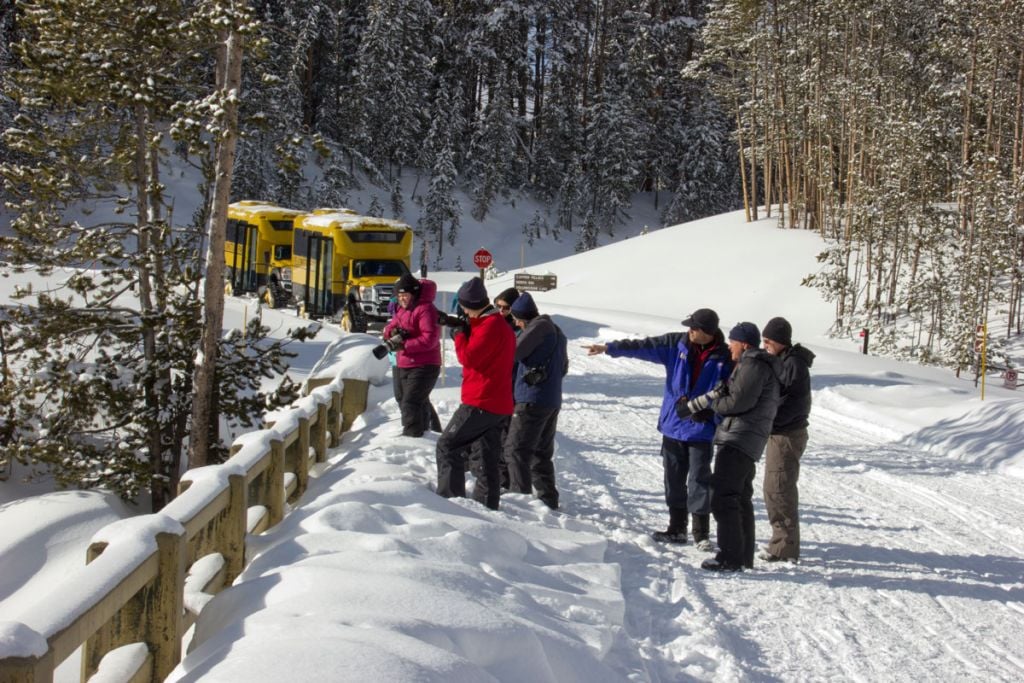 Northern Yellowstone
Northern Yellowstone
Lamar Valley & The Northern Range
In the northern one-third of the park, especially Lamar Valley, the cold, wind, and snow drives the wolves, bison, mule deer, and coyotes down from the high ridges and mountains to forage and hunt for food in the open meadows near the road, creating optimum viewing for Yellowstone safari-goers.
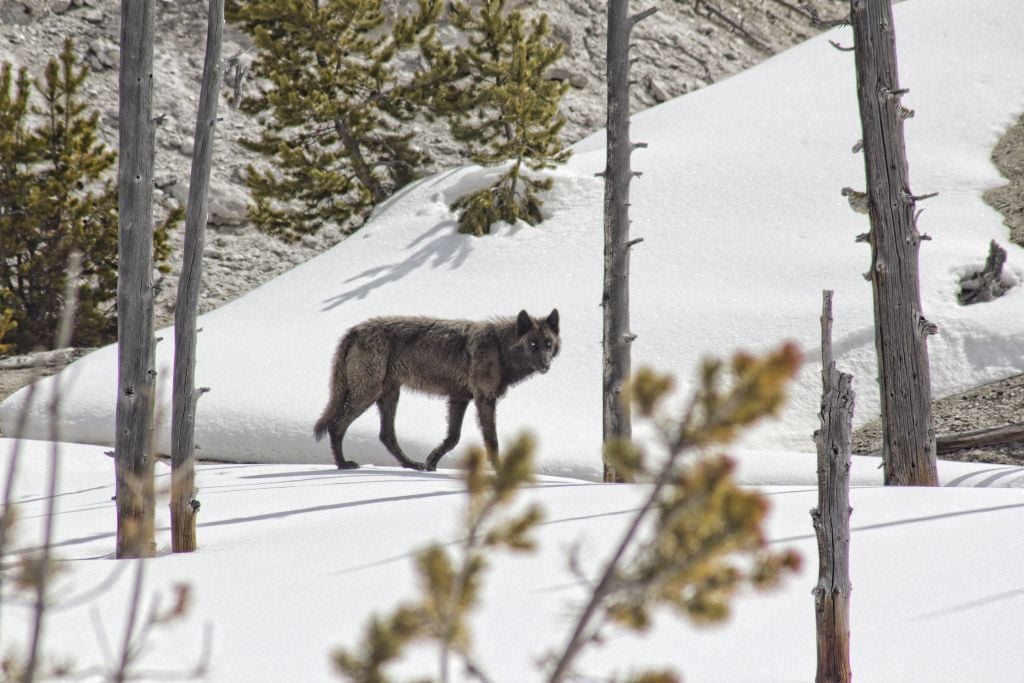
Yellowstone, with at least 99 wolves living in 10 packs, rates as one of the best places in the world to see these animals. Although wolves roam throughout Yellowstone, Lamar Valley and the Northern Range’s open vistas provide good viewing. The contrast between the wolves’ thick gray or black coats and the snow-covered meadows and hillsides make spotting the wolves easier than in summer.
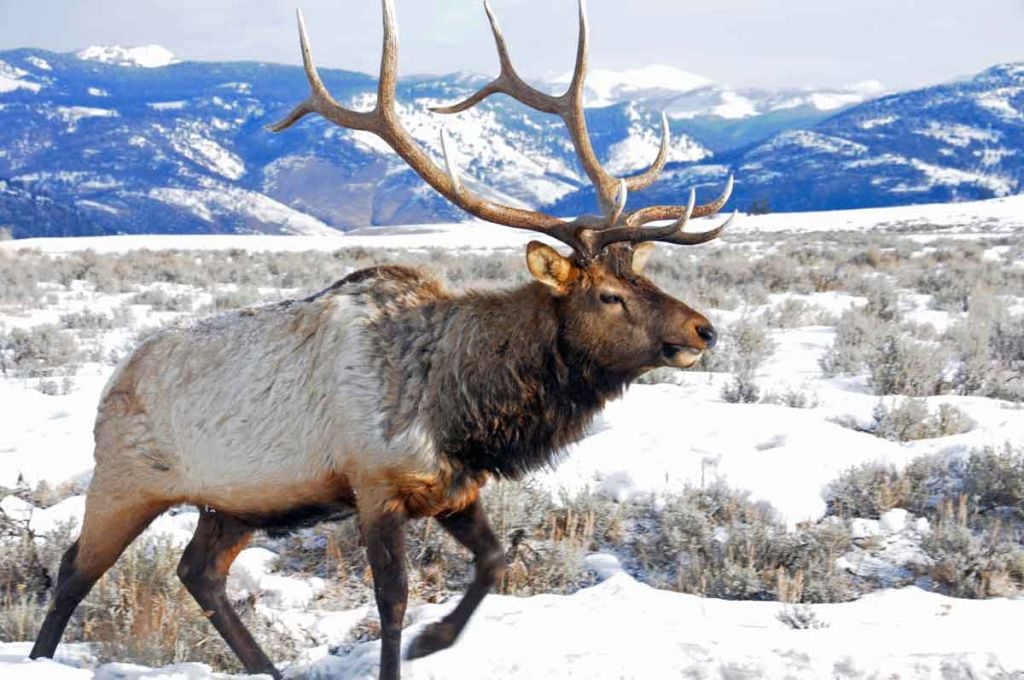
Bison and elk, and maybe even bobcats, can be spotted along the Yellowstone and Lamar Rivers. Also, look for some of the park’s dozen species of owls in the northern range’s woods. In winter the owls swoop into lower elevations to search for rodents.
Guided Snowcoach Tours from Mammoth Hot Springs Hotel
Southern Yellowstone
Old Faithful, Firehole River, Madison River
Bison, icicles dangling from their thick coats, huddle near Old Faithful, obtaining warmth from the geysers, mud pots, and steam vents. On the Firehole River and Madison Rivers, look for birds, bison, elk, maybe even bobcats, as well as trumpeter swans who find their way to rivers with moving water that has not frozen over.
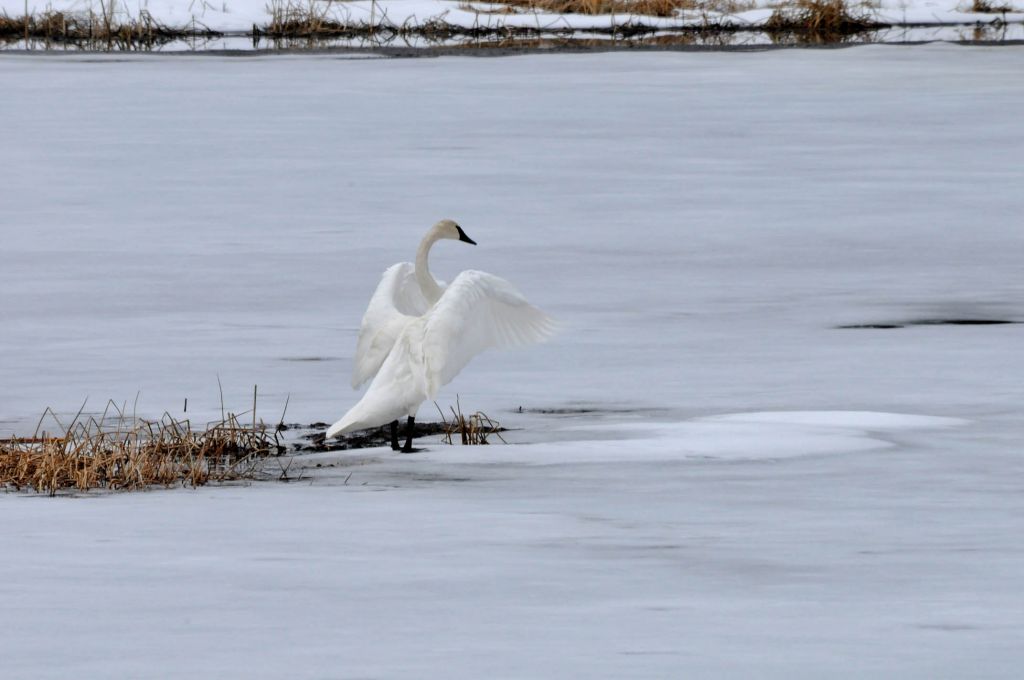
Yellowstone Lake
Watch for otters sliding in and out of openings in the frozen water. You might also see pronghorn antelope, bighorn sheep, and coyotes.
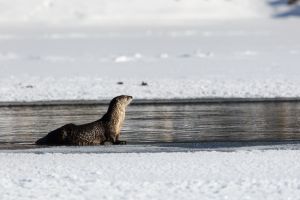
Guided Snowcoach Tours from Old Faithful Snow Lodge
Old Faithful Area Snowshoe Tour
Firehole Basin Winter Adventure
Long-time family travel guru Candyce H. Stapen writes for many publications and outlets. She has written 30 travel guidebooks, including two for National Geographic, and her blogs and articles appear in many outlets. For more information, see gfvac.com and follow her @familyitrips.
20161202
For A World of Unforgettable Experiences® available from Xanterra Travel Collection® and our sister companies, visit xanterra.com.
Want to experience Yellowstone in-depth? See what makes Yellowstone National Park a great place to work for a season or longer!
Book Your Adventure
- Book Your Adventure